Occupation of the Baltic states

The occupation of the Baltic states refers to the occupation of Estonia, Latvia, and Lithuania first by the Soviet Union under the provisions of the 1939 Molotov-Ribbentrop Pact with Nazi Germany, then by Nazi Germany from 1941-1944, and again by the Soviet Union from 1944-91.[1][2][3][4][5][6]
When World War II started in September 1939, the fate of the Baltic countries had been already decided in the German-Soviet Nonaggression Pact and its Secret Additional Protocol of August 1939.[7]
World War II losses in the Baltic states were among the highest in Europe. Estimates of population loss stand at 25% for Estonia, 30% for Latvia, and 15% for Lithuania. War and occupation deaths have been estimated at 90,000 in Estonia, 180,000 in Latvia, and 250,000 in Lithuania. These include the Soviet deportations in 1941, the German deportations, and Holocaust victims.[8]
In the reassessment of Soviet history that began during perestroika in 1989, the USSR condemned the 1939 secret protocol between Nazi Germany and itself that had led to the invasion and occupation of the three Baltic countries.[9]
The Baltic States' struggle for independence came to a conclusion in 1991, when the sovereignties of the countries were restored, accelerating to the eventual break-up of the Soviet Union later that year after the three states had seceded. The last Russian troops withdrew from the Baltic States in August 1994.[10]
Pre-1939
The four countries on the Baltic Sea that were formerly parts of the Russian Empire — Finland, Estonia, Latvia and Lithuania — consolidated their borders and independence after the Estonian, Latvian and Lithuanian independence wars following the end of World War I by 1920 (see Treaty of Tartu, Latvian-Soviet Riga Peace Treaty and Soviet-Lithuanian Treaty of 1920).
In 1924 Lithuania, Latvia and Estonia sealed a pact of mutual defense against eventual aggressors.[11] Ten years later, the Stalinist USSR pledged to not attack these three Baltic States until 1944.[12]
The Soviet ultimatums in 1939
The Beginning of World War II
- On September 1, 1939, Germany invaded Poland.
- On September 3, Great Britain, France, Australia, New Zealand declared war on Germany
- On September 10, Canada declared war on Germany
- On September 14, the Polish submarine ORP Orzeł reached Tallinn, Estonia
- On September 17, the Soviet Union attacked Poland.
- On September 18, the "Orzeł incident" occurred: a Polish submarine escaped from internment in Tallinn and eventually made her way to the United Kingdom. Estonia's neutrality was questioned by the Soviet Union and Germany.
Ultimatums to Estonia, Latvia, Lithuania
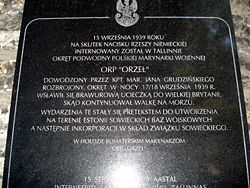
On September 24, 1939, warships of the Soviet Navy appeared off Estonian ports and Soviet bombers began a threatening patrol over Tallinn and the nearby countryside.[13] The USSR then entered the airspace of all three Baltic states, flying massive intelligence gathering operations on September 25. Moscow requested that the Baltic countries allow the USSR to establish military bases and to station troops on their soil.[14]
The government of Estonia accepted the ultimatum, signing the corresponding agreement on September 28, 1939. Latvia followed on October 5, 1939 and Lithuania shortly thereafter, on October 10, 1939. The agreements permitted the Soviet Union to establish military bases on the Baltic states' territory for the duration of the European war[15] and station 25,000 Soviet soldiers in Estonia, 30,000 in Latvia and 20,000 in Lithuania from October, 1939.
In early 1939, the Leningrad Military District had already allocated 17 divisions, about 10% of the Soviet Army, to the Baltic states. Mobilizations followed shortly. The 8th Army was dispatched to Pskov on September 14, 1939, and the mobilized 7th Army placed under the Leningrad Military District. Invasion preparations were by now nearing completion. On September 26, the Leningrad Military District was ordered to "start concentrating troops on the Estonian-Latvian border and to finish that operation on September 29th." The order noted, "for the time of starting the attack a separate directive will be issued."[16] Altogether, by the beginning of October, 1939, the Soviets had amassed along the Estonia-Latvia border:
- 437,325 troops;
- 3,635 artillery pieces;
- 3,052 tanks;
- 421 armored vehicles;
- 21,919 cars.[17]
Finland invaded
Finland was offered the same opportunity to sign a pact; however, the Finns refused,[18] and on November 30, 1939 the Soviet Union invaded Finland, launching the Winter War. The invasion was judged as illegal by the League of Nations, which expelled the Soviet Union on December 14.[19] The war was brought to an end on March 13, 1940, when Finland and the Soviet Union signed the Moscow Peace Treaty. While Finland had resisted being conquered, it was nevertheless coerced to cede nearly all of Finnish Karelia (with Finland's industrial center, including Vyborg/Viipuri, Finland's second largest city; in total, nearly 10% of the territory), even though large parts were still held by Finland's army. Military troops and remaining civilians were hastily evacuated to areas inside the new border. 422,000 Karelians, 12% of Finland's population, lost their homes. Finland also had to cede a part of the Salla area, the Finnish part of the Kalastajansaarento (Rybachi) peninsula in the Barents Sea, and in the Gulf of Finland the islands of Suursaari, Tytärsaari, Lavansaari and Seiskari. Finally, the Hanko Peninsula was leased to the Soviet Union as a naval base for 30 years. In June 1941, hostilities between Finland and USSR resumed in the Continuation War.
Soviet invasion and occupation, 1940-1941
Soviet invasion



On June 12, 1940 the order for a total military blockade of Estonia to the Soviet Baltic Fleet was given: according to the director of the Russian State Archive of the Naval Department Pavel Petrov (C.Phil.) referring to the records in the archive.[20][21]
On June 14, 1940, the Soviet military blockade of Estonia went into effect while world attention was focused on the fall of Paris to Nazi Germany. Two Soviet bombers downed the Finnish passenger airplane "Kaleva" flying from Tallinn to Helsinki carrying three diplomatic pouches from the U.S. legations in Tallinn, Riga and Helsinki. The US Foreign Service employee Henry W. Antheil, Jr. was killed in the crash.[22]
On June 15, the USSR invaded Lithuania[23] and Soviet troops attacked the Latvian border guards at Masļenki.[24]
On June 16, 1940, the USSR invaded Estonia and Latvia.[23] According to a Time Magazine article published at the time of the invasions, in a matter of days around 500,000 Soviet Red Army troops occupied the three Baltic nations — just one week before the Fall of France to Nazi Germany.[25]
Molotov accused the Baltic states of conspiracy against the Soviet Union and delivered an ultimatum to all Baltic countries for the establishment of Soviet-approved governments. Threatening invasion and accusing the three states of violating the original pacts as well as forming a conspiracy against the Soviet Union, Moscow presented ultimatums, demanding new concessions, which included the replacement of governments and allowing an unlimited number of troops to enter the three countries.[26][27][28][2] Hundreds of thousands Soviet troops entered Estonia, Latvia, Lithuania across the borders.[29] These additional Soviet military forces far outnumbered the armies of each country.[30]
The Baltic governments had decided that, in conditions of international isolation and given the overwhelming Soviet force both on the borders and inside the countries, it was in their interests not to actively resist and to avoid bloodshed in an unwinnable war.[31] The occupation of the Baltic states was complete with a communist coup d'état in each country, supported by the Soviet troops.[32]
Most of the Defence Forces of the Baltic Countries surrendered on these orders, and were disarmed by the Red Army. However, the Estonian Single Signal Battalion stationed in Tallinn at Raua Street showed some resistance. The Red Army brought in additional reinforcements supported by six armoured fighting vehicles, and the battle lasted several hours. There was one dead and several wounded on the Estonian side, and about 10 killed and more wounded on the Soviet side. Finally the military resistance was ended with negotiations and the Single Signal Battalion surrendered and was disarmed.[33]
Soviet terror
- See also: Communist terrorism
- See also: The Soviet Story

The repressions followed with the mass deportations carried out by the Soviets. Order № 001223, "On the Procedure for carrying out the Deportation of Anti-Soviet Elements from Lithuania, Latvia, and Estonia", contained detailed instructions for procedures and protocols to observe in the deportation of Baltic nationals.
Led by Stalin’s close associates,[34] the local communist supporters and those brought in from Russia, forced the presidents and governments of all three countries to resign, replacing them with provisional "people's governments" made up entirely of Communists.
In the following month, rigged parliamentary elections were conducted by local Communists loyal to the Soviet Union. Only the Communists and their allies were allowed to run[35] The election results were completely fabricated: the Soviet press service released them early, with the result that they had already appeared in print in a London newspaper a full 24 hours before the polls closed.[36][37] The result was that all three Baltic states had communist majorities in their parliaments, and in August, despite claims prior to the elections that no such action would be taken,[35] they were all presented with motions to ask for admission to the Soviet Union. In each case, the motions passed. In due course, the Soviet Union "accepted" all three petitions and formally annexed the three countries.
Those who failed to have their passports stamped for so voting were shot in the back of the head.[38] Public tribunals were also set up to punish "traitors to the people": those who had fallen short of the "political duty" of voting their countries into the USSR.

Immediately after the elections, NKVD units under the leadership of Ivan Serov arrested more than 15,000 "hostile elements" and members of their families[30]. In the first year of Soviet occupation, from June 1940 to June 1941, the number confirmed executed, conscripted, or deported is estimated at a minimum of 124,467: 59,732 in Estonia, 34,250 in Latvia, and 30,485 in Lithuania.[39] This included 8 former heads of state and 38 ministers from Estonia, 3 former heads of state and 15 ministers from Latvia, and the then president, 5 prime ministers and 24 other ministers from Lithuania.[40] The last large-scale operation was planned for the night of 27-28 June 1941. It was postponed until after the war when the Germans invaded the USSR on 22 June 1941 - Operation Barbarossa[30]. According to historian Robert Conquest, the selective deportations from the Baltic States represented the policy of "decapitation" of the nation by removing its political and social elite, "as was later evidently to be the motive for the Katyn massacre."[41]
Between July and August 1940, Estonian, Latvian and Lithuanian envoys to the United States and the United Kingdom made official protests against Soviet occupation and annexation of their countries. The United States,[42] in accordance with the principles of the Stimson Doctrine (Sumner Welles' Declaration of July 23, 1940[43][37]), as well as most other Western countries[44][45] never formally recognized the annexation, but did not directly interfere with Soviet control. The Baltic States continued their de jure existence in accordance with international law.[46][47] Diplomatic and consular representations of the Baltic States continued to function between 1940 - 1991 in some Western countries (USA, Australia, Switzerland).[48] Members of Estonian, Latvian and Lithuanian diplomatic services in Western countries continued to formulate and express the official opinion of Estonia, Latvia and Lithuania, and protected the interests of these countries and their citizens abroad between 1940–1991, i.e., until the restoration of independence of the Baltic States.
The events in the Baltic Republics were not isolated. In Finland and the Scandinavian peninsula, the great powers demanded concessions infringing their neutrality or sovereignty. Germany had pressured Sweden to grant transit rights for material and personnel transportation between Norway and ports of southern Sweden during the fighting in Norway, and achieved this after Norway's defeat. Immediately thereafter, the Soviet Union began to pressure Finland for transfer rights over land between the Hanko naval base and the Soviet border, established as a Finnish concession in the Moscow Peace Treaty, as well as for control of the Petsamo nickel mine.
In August, Finland granted transfer rights to German troops traveling between Northern Norway and ports of the Gulf of Bothnia in a diplomatic effort to improve relations with Nazi Germany that had been frosty since the mid-1930s due to ideological differences, clearly demonstrated when the Third Reich sided with the Soviet Union during the Winter War. Finland now managed to increase political contacts with Germany, which were seen as the only hope against Soviet occupation. In September, Finland and the Soviet Union came to an agreement on Hanko transitations. When the Soviet foreign minister, Vyacheslav Molotov, in November 1940, requested German acceptance and passive support for invasion of Finland, Hitler declined as he saw Finland as a potential ally in the upcoming invasion of the Soviet Union. The negotiations for the Petsamo mines stalled for several months, until indirect German support allowed the Finns to let those negotiations lapse.
Occupation by Nazi Germany, 1941-1944
- See also: Occupation of Estonia by Nazi Germany
- See also: Occupation of Latvia by Nazi Germany
- See also: Lithuanian 1941 independence
Germany occupied the territories of Baltic states after invading the Soviet Union in 1941 during Operation Barbarossa. At the beginning the Lithuanians, Latvians and Estonians considered the Germans to be their liberators from Soviet rule. In Lithuania, a revolt broke out on the first day of the war, and an independent provisional government was established. As the German armies approached Riga and Tallinn, attempts to reestablish national governments were made. It was hoped that the Germans would reestablish Baltic independence. Such political hopes soon evaporated and Baltic cooperation became less forthright or ceased altogether.[49] A growing proportion of local population turned against the Nazi regime as Germany turned the Baltic states (except for the Memel (Klaipeda) region reclaimed by Reich in 1939) and most of Belarus into the Reichskommissariat Ostland, a colony in which the four constituent nationalities were governed by a German administration. Hinrich Lohse, a German Nazi politician, was Reichskommissar until the Soviet re-occupation.
German policy in the area was harsh, not only involving the local population in the Holocaust but also subjugating local populations. One of the Nazi plans for the colonisation of conquered territories in the East, referred to as Generalplan Ost, called for the wholesale deportation of some two thirds of the native population from territories of the Baltic states in the event of a German victory. The remaining third were either to be exterminated in situ, used as slave labour or Germanised if deemed sufficiently Aryan, while hundreds of thousands of German settlers were to be moved into the conquered territories.
Towards the end of the war, once it became clear that Germany would be defeated, many Lithuanians, Latvians and Estonians joined the Germans once again. It was hoped that by engaging in such a war the Baltic countries would be able to attract Western support for the cause of independence from the USSR.[50] In Latvia an underground nationalist Central Council of Latvia was formed on August 13, 1943. An analogous body, the Supreme Committee for the Liberation of Lithuania, emerged on November 25, 1943. On March 23, 1944, the underground National Committee of the Estonian Republic was founded. In Estonia, as a country was incorporated into the German province of Ostland. Thousands of Estonians not willing to side with the Nazis joined the Finnish army to fight against the Soviet Union. The Finnish Infantry Regiment 200 was formed out of Estonian volunteers in Finland, known colloquially as the "Finland Boys" (Estonian: soomepoisid). By January 1944, the Russian front advanced almost all the way to the former Estonian border. Narva was evacuated. Jüri Uluots, the last legitimate prime minister of the Republic of Estonia (according to the constitution of Estonia) prior to its fall to the Soviet Union in 1940 and now the head of the National Committee of the Estonian Republic, delivered a radio address that implored all able-bodied men born from 1904 through 1923 to report for military service (prior to this, Uluots had opposed Estonian mobilization). The call drew support from all across the country: 38,000 Volunteers jammed registration centers.[51] Several thousand Estonians who had joined the Finnish army came back across the Gulf of Finland to join the newly formed Territorial Defense Force, assigned to defend Estonia against the Soviet advance. In 1943 and 1944, two divisions of Waffen SS were formed from Latvians, predominantly conscripts, to fight against the Red Army. The Battles of Narva were perceived by Estonian people as the battle for their country, a consolation for the humiliation of 1939.[52] The lengthy German defense on the North Eastern border prevented a swift Soviet breakthrough into Estonia, which gave the underground Estonian National Committee enough time for an attempt to re-establish Estonian independence. On 1 August 1944, the Estonian National Committee pronounced itself Estonia’s highest authority, and on 18 September 1944, acting Head of the State Jüri Uluots appointed a new government led by Otto Tief. Over the radio, in English, the Estonian government declared its neutrality in the war. The government issued two editions of State Gazette. On September 21, the national forces seized the government buildings in Tallinn and ordered the German forces to leave.[53] The Estonian flag was raised in the permanent flag mast in the tallest tower of Tallinn only to be removed by the Soviets four days later. Estonian Government in Exile served to carry the continuity of the Estonian state forward until 1992, when Heinrich Mark, the last prime minister in the duties of the Head of State, handed his credentials over to the incoming President Lennart Meri. Latvia and Lithuania continued in exile, based on the embassies in U.S. and UK
The Holocaust
Estonia
Out the approximately 4,300 Jews prior to the war, 963 were trapped in Estonia by the Nazi advance.[54] Many Jewish people (estimated at around 500 individuals) were deported to Siberia along with other Estonians by the Soviets.[55] During the Nazi occupation, an estimated 10,000 Jews were killed in Estonia after having been deported to camps there from elsewhere in Eastern Europe.[56] There have been trials of 7 ethnic Estonians (Ralf Gerrets, Ain-Ervin Mere, Jaan Viik, Juhan Jüriste, Karl Linnas, Aleksander Laak and Ervin Viks) for crimes against humanity. Since the re-establishment of Estonian independence, an Estonian International Commission for Investigation of Crimes Against Humanity has been established.[57]
Latvia
The Jewish community had already suffered heavily in the Soviet mass deportations, losing much of its civic and political leadership. Proportionately, the mass deportations extracted a heavier toll on Jews than any other ethnicity.[58] Deprived of their leadership, Jews were ill-prepared to respond to the Nazi threat. After the establishment of German authority, the process of eliminating the Jewish and Gypsy population began, with many killings taking place in Rumbula. The killings were committed by the Einsatzgruppe A, the Wehrmacht and Marines (in Liepāja), as well as by Latvian collaborators, including the 500-1,500 members of the infamous Arājs Commando (which alone killed around 26,000 Jews) and the 2,000 or more Latvian members of the SD.[59][60] By the end of 1941 almost the entire Jewish population had been killed or interned in death camps. In addition, some 25,000 Jews were brought from Germany, Austria and the present-day Czech Republic, of whom around 20,000 were killed. The Holocaust claimed approximately 85,000 lives in Latvia.[59]
Lithuania
- See also: Non-German cooperation with Nazis during World War II#Lithuania
Before the Holocaust, Lithuania was home to 160,000 Jews, and was one of the greatest centers of Jewish theology, philosophy, and learning which preceded even the times of the Gaon of Vilna. By 1941, fleeing refugees (mostly from Poland), had increased the number of Jews in the country to 250,000.
With the beginning of Operation Barbarossa in June 1941, the Lithuanian underground government, formed in 1940, briefly re-established independent Lithuania in an uprising coinciding with Germany's declaration of war on the Soviet Union, even though key members had been arrested by the Soviets only the day before, most to be later executed after show trials in the Soviet Union. Completion of the Nazi occupation of Lithuania forced the government to dissolve shortly thereafter.
In late June, detachments of the German Einsatzgruppe A under Franz Walter Stahlecker began to operate on Lithuanian territory. In some places Stahlecker's men sought to encourage pogroms (so-called "Selbstreinigungsaktionen") against the Jewish population; Stahlecker's Consolidated Report of 15 October 1941 expressed frustration over how unexpected difficulties were initially experienced in this.[61] Nevertheless, together with voluntary Lithuanian auxiliaries, the Germans were able to start large scale mass shootings of Jews. According to German documents, between 25 and 26 June 1941, "about 1,500 Jews were eliminated by the Lithuanian partisans. Many Jewish synagogues were set on fire; on the following nights another 2,300 were killed."[62] By November of 1941, many Jews had been killed in places like Paneriai (Ponary massacre). The surviving 40,000 Jews were concentrated in the Vilnius, Kaunas, Šiauliai, and Švenčionys ghettos, and in concentration camps, where many died of starvation or disease. In 1943, the ghettos were either destroyed by the Germans or turned into concentration camps, and 5,000 Jews were deported to the extermination camps.
During the first wave of killings in 1941–42, Roma people, alleged Communist activists, and the mentally disabled were also targeted.[63] Additionally, large numbers of Soviet POWs perished in German captivity due to wilful neglect by the German authorities.[64]
At the end of the war, only 10–15% of Lithuania's Jews survived, most of them by escaping to the interior of the USSR during the German invasion in 1941. The genocide rate of Jews in Lithuania, 95–97%, was the highest in Europe. This was primarily due, with few notable exceptions, to widespread Lithuanian help and cooperation with the German occupiers at all levels of society. Jews were widely considered to have supported the previous Soviet regime. Anti-Jewish attitudes therefore increased as the anti-Soviet sentiment within Lithuanian nationalism complemented already existing, traditional antisemitism.[65][66][67]
Another factor influencing the high degree of Jewish genocide in Lithuania in contrast to other places in Europe (Denmark, Germany, the Netherlands) was the relative lack assimilation of Jews in eastern Europe.
Soviet re-occupation, 1944-1991
The Soviet Union reoccupied the Baltic states as part of the , a twofold military-political operation to rout German forces and the "liberation of the Soviet Baltic peoples"[68] beginning in summer-autumn 1944, lasting until the capitulation of German and Latvian forces in Courland pocket in May 1945, and they were gradually absorbed into Soviet Union. On 12 January 1949 the Soviet Council of Ministers issued a decree "on the expulsion and deportation" from Baltic states of "all kulaks and their families, the families of bandits and nationalists", and others.[30] More than 200,000 people are estimated to have been deported from the Baltic in 1940-1953. In addition, at least 75,000 were sent to Gulag. 10 percent of the entire adult Baltic population was deported or sent to labor camps.[30]
After World War II, as part of the goal to more fully integrate Baltic countries into the Soviet Union, mass deportations were concluded in the Baltic countries and the policy of encouraging Soviet immigration to the Baltic states continued.[69]
In July 1989, following the dramatic events in East Germany, the Supreme Soviets of the Baltic countries adopted a "Declaration of Sovereignties" and amended the Constitutions to assert the supremacy of their own laws over those of the USSR. Candidates from the pro-independence party Popular Fronts gained majority in the Supreme Councils in 1990 democratic elections. The Councils declared their intention to restore full independence. Soviet political and military forces tried unsuccessfully to overthrow the governments. In 1991, Baltic countries claimed de facto independence. International recognition, including that of the USSR, followed. The United States, which had never recognized forcible annexation of the Baltic countries by the USSR, resumed full diplomatic relations with the republics.[69]
Historical considerations
In Northern Europe, the fate of small countries during World War II varied considerably. Denmark and Norway were occupied by Germany; Sweden had to make some concessions but with skillful foreign policy and a credible military it was able to stay out of the war. Both Denmark and Norway reverted to democracy after the Nazi capitulation.
Estonia, Latvia and Lithuania were again occupied and annexed by the Soviet Union and only regained their independence nearly fifty years later in the aftermath of the Soviet coup of 1991. Finland, which geographically was in a less advantageous position than Sweden, had to endure two wars: the (Winter War and the Continuation War) with territorial losses, and had to bend its foreign policy in favor of the Soviet Union after the war (Finlandization), but it remained independent, capitalist and maintained a democratic political system after World War II.
Recognition and non-recognition of annexation and occupation
The majority of countries refused to recognise the incorporation of the Baltic states de jure and only recognised the Soviet governments of Estonian SSR, Latvian SSR and Lithuanian SSR de facto or not at all. [70][71] Such countries recognized Estonian/Latvian/Lithuanian diplomats and consuls who still functioned in the name of their former governments. These aging diplomats persisted in this anomalous situation until the ultimate restoration of Baltic independence.[72]
De jure non-recognition
The Baltic annexation by the USSR de jure not recognised according to the August 8, 1960 survey: [73]
 Afghanistan - no official relations with Baltic representatives, no final decision on non-recognition policy.
Afghanistan - no official relations with Baltic representatives, no final decision on non-recognition policy.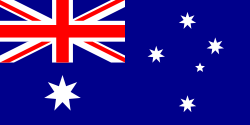 Australia - semi official relations maintained with Baltic representatives, de jure recognised for 17 months between July 1974-December 1975 by the Whitlam government.
Australia - semi official relations maintained with Baltic representatives, de jure recognised for 17 months between July 1974-December 1975 by the Whitlam government. Canada - semi official relations maintained with Baltic representatives. De facto recognition accorded, de jure denied [74]
Canada - semi official relations maintained with Baltic representatives. De facto recognition accorded, de jure denied [74] Belgium - no final decision on non-recognition policy, no official relations with Baltic representatives, no de jure nor de facto recognition accorded.[70]
Belgium - no final decision on non-recognition policy, no official relations with Baltic representatives, no de jure nor de facto recognition accorded.[70]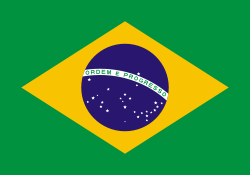 Brazil - official relations with Baltic representatives.
Brazil - official relations with Baltic representatives.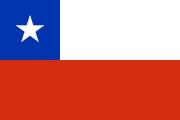 Chile - no diplomatic relations with USSR.
Chile - no diplomatic relations with USSR. China - [75]
China - [75] Costa Rica - no diplomatic relations with USSR
Costa Rica - no diplomatic relations with USSR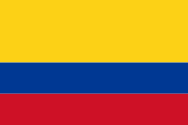 Colombia - Some relations maintained with Baltic representatives, no final decision on non-recognition policy
Colombia - Some relations maintained with Baltic representatives, no final decision on non-recognition policy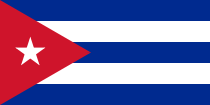 Cuba - Some relations maintained, no final decision on non-recognition policy
Cuba - Some relations maintained, no final decision on non-recognition policy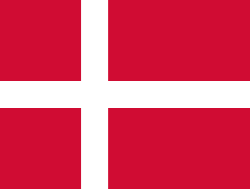 Denmark - Some relations with Baltic representatives maintained, no final decision on non-recognition policy
Denmark - Some relations with Baltic representatives maintained, no final decision on non-recognition policy Dominica - no diplomatic relations with USSR
Dominica - no diplomatic relations with USSR Ecuador - no diplomatic relations with USSR
Ecuador - no diplomatic relations with USSR Ethiopia - no official relations, no final decision on non-recognition policy
Ethiopia - no official relations, no final decision on non-recognition policy Germany - Recognition of Baltic passports, no final decision on non-recognition policy, no de jure nor de facto recognition accorded.[70]
Germany - Recognition of Baltic passports, no final decision on non-recognition policy, no de jure nor de facto recognition accorded.[70]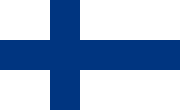 Finland - no official relations, no final decision on non-recognition policy.
Finland - no official relations, no final decision on non-recognition policy. France - maintained semi official relations, no final decision on non-recognition policy
France - maintained semi official relations, no final decision on non-recognition policy Iceland - no official diplomatic relations
Iceland - no official diplomatic relations Greece - no official relations, no final decision on non-recognition policy
Greece - no official relations, no final decision on non-recognition policy Iran - no official relations with Baltic representatives.
Iran - no official relations with Baltic representatives. Ireland - no official relations, no de jure nor de facto recognition accorded.[70]
Ireland - no official relations, no de jure nor de facto recognition accorded.[70] Italy - de facto recognition accorded. [70]
Italy - de facto recognition accorded. [70] Liberia - no diplomatic relations with USSR
Liberia - no diplomatic relations with USSR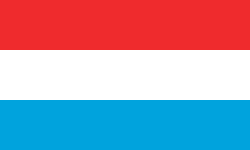 Luxembourg - no official relations
Luxembourg - no official relations Mexico - some relations with Baltic representatives, no final decision on non-recognition policy.
Mexico - some relations with Baltic representatives, no final decision on non-recognition policy. Netherlands - Visa de courtoisie granted to Baltic representatives in London, no final decision on non-recognition policy
Netherlands - Visa de courtoisie granted to Baltic representatives in London, no final decision on non-recognition policy Nicaragua - no diplomatic relations with USSR
Nicaragua - no diplomatic relations with USSR Norway - no official relations, no final decision on non-recognition policy.
Norway - no official relations, no final decision on non-recognition policy.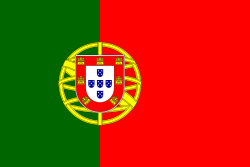 Portugal - no diplomatic relations with USSR, no de jure nor de facto recognition accorded.[70]
Portugal - no diplomatic relations with USSR, no de jure nor de facto recognition accorded.[70]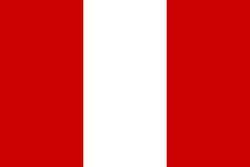 Peru - no diplomatic relations with USSR
Peru - no diplomatic relations with USSR Paraguay - no diplomatic relations with USSR
Paraguay - no diplomatic relations with USSR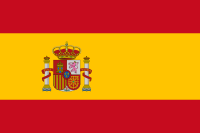 Spain - maintained semi official diplomatic relations, had no diplomatic relations with USSR until 1977. no de jure nor de facto recognition accorded.[70]
Spain - maintained semi official diplomatic relations, had no diplomatic relations with USSR until 1977. no de jure nor de facto recognition accorded.[70] Switzerland - some relations maintained, fiduciary of Baltic assets, no final decision on non-recognition policy
Switzerland - some relations maintained, fiduciary of Baltic assets, no final decision on non-recognition policy Taiwan - no diplomatic relations with USSR
Taiwan - no diplomatic relations with USSR Turkey - no official relations, no final decision on non-recognition policy
Turkey - no official relations, no final decision on non-recognition policy United Kingdom - maintained semi official diplomatic relations, de facto recognition accorded.[70]
United Kingdom - maintained semi official diplomatic relations, de facto recognition accorded.[70] United States - maintained official diplomatic relations, no de jure nor de facto recognition accorded.[70]
United States - maintained official diplomatic relations, no de jure nor de facto recognition accorded.[70]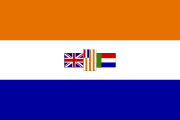 Union of South Africa - no official relations
Union of South Africa - no official relations Uruguay - maintained official diplomatic relations
Uruguay - maintained official diplomatic relations Vatican City - maintained official diplomatic relations, no de jure nor de facto recognition accorded.[70]
Vatican City - maintained official diplomatic relations, no de jure nor de facto recognition accorded.[70] Venezuela - no diplomatic relations with USSR
Venezuela - no diplomatic relations with USSR
De jure recognition
The governments granted de jure recognition of the Soviet annexation and governance of the Baltic states according to the August 8, 1960 survey:
 Austria - Implicit de jure recognition granted, Baltic passports not recognized
Austria - Implicit de jure recognition granted, Baltic passports not recognized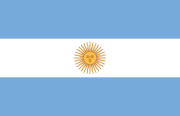 Argentina - Implicit de jure recognition granted, Baltic passports not recognized
Argentina - Implicit de jure recognition granted, Baltic passports not recognized Bolivia
Bolivia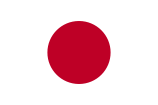 Japan
Japan Sweden — Sweden provided shelter, food, medical assistance and financial aid in order to resettle over 30,000 Baltic refugees. It also turned over to the USSR Baltic embassies and bank assets transferred to Sweden for safekeeping and in 1946 deported Baltic legionnaires who has been conscripted into the German army[76]; after the Baltics regained independence, Sweden repaid 2,908 kilograms of gold deposited by Estonia and 1,250 kilograms deposited by Lithuania (in 1992, valued at $47.2 million)[77]
Sweden — Sweden provided shelter, food, medical assistance and financial aid in order to resettle over 30,000 Baltic refugees. It also turned over to the USSR Baltic embassies and bank assets transferred to Sweden for safekeeping and in 1946 deported Baltic legionnaires who has been conscripted into the German army[76]; after the Baltics regained independence, Sweden repaid 2,908 kilograms of gold deposited by Estonia and 1,250 kilograms deposited by Lithuania (in 1992, valued at $47.2 million)[77]
Previous de jure recognitions:
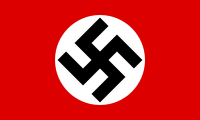 Nazi Germany — gave de jure recognition on January 10th, 1941, when the German-Soviet treaty on the mutual border was concluded in Moscow.
Nazi Germany — gave de jure recognition on January 10th, 1941, when the German-Soviet treaty on the mutual border was concluded in Moscow.
Wartime expediency
The precedent under international law established by the earlier-adopted Stimson Doctrine, as applied to the Baltics in U.S. Under Secretary of State Sumner Welles's declaration of July 23, 1940, defined the basis for non-recognition of the Soviet Union's forcible incorporation of the Baltic states.[78][79] Despite Welles's statement, the Baltics soon reprised their centuries-long role as pawns in the conflicts of larger powers. After visiting Moscow in the winter of 1941-1942, British Foreign Minister Eden already advocated sacrificing the Baltics to secure Soviet cooperation in the war. The British ambassador to the U.S., Halifax, reported, "Mr. Eden cannot incur the danger of antagonizing Stalin, and the British War Cabinet have... agree[d] to negotiate a treaty with Stalin, which will recognize the 1940 frontiers of the Soviet Union."[80] By 1943 Roosevelt had also consigned the Baltics and Eastern Europe to Stalin. Meeting with Cardinal Spellman in New York on September 3, Roosevelt stated, "The European people will simply have to endure Russian domination, in the hope that in ten or twenty years they will be able to live well with the Russians."[81] Meeting with Stalin in Tehran on December 1, Roosevelt "said that he fully realized the three Baltic Republics had in history and again more recently been part of Russia and jokingly added, that when the Soviet armies re-occupied these areas, he did not intend to go to war with the Soviet Union on this point."[82] A month later, Roosevelt related to Otto von Habsburg that he had told the Russians they could take over and control Romania, Bulgaria, Bukovina, Eastern Poland, Lithuania, Estonia, Latvia, and Finland.[83] The future was sealed when on October 9, 1944 Churchill met with Stalin in Moscow and penciled out the post-war state of Europe. Churchill recounts: "At length I said, 'Might it not be thought rather cynical if it seemed that we had disposed of these issues, so fateful to millions of people, in such an offhand manner? Let us burn the paper.' — 'No, you keep it,' said Stalin."[84] The February 1945 Yalta Conference, widely ascribed as determining the future of Europe, essentially codified Churchill's and Roosevelt's prior private commitments to Stalin not to interfere in Soviet control of Eastern Europe.
Three decades later, hopes on the part of the Baltic states for any active intervention on their behalf were quashed when the United States, European states and Soviet Union signed the Helsinki Accords of 1975 which committed its parties to respecting the established frontiers—avoiding use of the term "borders"—of postwar Europe.[85] Countries such as the United States continued to maintain nonrecognition of the Soviet annexation of the Baltic states. In retrospect, the Baltic states' eventual reestablishment of their independence and borders has been interpreted as vindicating the Accords, which supported human rights and self-determination.[86] However, at the time, from the Soviet point of view—one shared by Baltic activists, who had lobbied against the signing—the Helsinki Accords were an outright victory securing against foreign intervention all of the USSR's post-war territorial adjustments including the Oder-Neisse Line and the annexation of Moldova and the Baltic states.[87]
Policy position of the Russian Federation
With the advent of Perestroika and its reassessment of Soviet history, the Supreme Soviet of the USSR in 1989 condemned the 1939 secret protocol between Nazi Germany and itself that had led to the division of Eastern Europe and the invasion and occupation of the three Baltic countries.[9]
While this action did not state the Soviet presence in the Baltics was an occupation, the Russian Soviet Federated Socialist Republic and Republic of Lithuania affirmed so in a subsequent agreement in the midst of the collapse of the Soviet Union. Russia, in the preamble of its July 29, 1991 Treaty between the Russian Soviet Federated Socialist Republic and the Republic of Lithuania on the Basis for Relations between States, declared that the USSR had to eliminate the consequences of the 1940 annexation which violated Lithuania’s sovereignty, thereby acknowledging the USSR occupied Lithuania.
The prevailing post-Soviet consensus is that the Soviet occupation of the Baltic states was illegal, viz. declarations by the European Court of Human Rights,[88], the European Union,[89] the United States[78] which support the official positions of the governments of the Baltic states.[90][91]
Meanwhile, Russia's current official position directly contradicts its earlier rapproachement with Lithuania.[92] The Russian government and state officials maintain that the Soviet annexation of the Baltic states was legitimate[93] and that the Soviet Union liberated the countries from the Nazis.[94] They assert that Soviet troops initially entered the Baltic countries in 1940 following agreements and with the consent of the governments of the Baltic republics. Their position is that the USSR was not in a state of war and was not engaged in combat activities on the territories of the three Baltic states, therefore, the word "occupation" cannot be used.[95][96] "The assertions about [the] 'occupation' by the Soviet Union and the related claims ignore all legal, historical and political realities, and are therefore utterly groundless."—Russian Foreign Ministry. There now are fears among some historians that the Kremlin is promoting ultra-nationalism and engaging in a whitewash of the Soviet past.[97]
Soviet sources prior to Perestroika
- See also: Soviet historiography
Up to the reassessment of Soviet history in USSR that began during Perestroika, before the USSR had condemned the 1939 secret protocol between Nazi Germany and itself that had led to the invasion and occupation of the three Baltic countries.[9]
The events in 1939, according to the pre-perestroika Soviet sources, were as follows: The Government of the Soviet Union suggested that the Governments of the Baltic countries conclude mutual assistance treaties between the countries. Pressure from working people forced the governments of the Baltic countries to accept this suggestion. The Pacts of Mutual Assistance were then signed[98] which allowed the USSR to station a limited number of Red Army units in the Baltic countries. Economic difficulties and dissatisfaction of the populace with the Baltic governments' policies that had sabotaged fulfillment of the Pact and the Baltic countries governments' political orientation towards Nazi Germany lead to a revolutionary situation in June, 1940. To guarantee fulfillment of the Pact additional military units entered Baltic countries, welcomed by the workers who demanded the resignations of the Baltic governments. In June under the leadership of the Communist Parties political demonstrations by workers were held. The fascist governments were overthrown, and workers' governments formed. In July 1940, elections for the Baltic Parliaments were held. The "Working People’s Unions", created by an initiative of the Communist Parties, received the majority of the votes.[99] The Parliaments adopted the declarations of the restoration of Soviet powers in Baltic countries and proclaimed the Soviet Socialist Republics. Declarations of Estonia's, Latvia's and Lithuania's wishes to join the USSR were adopted and the Supreme Soviet of the USSR petitioned accordingly. The requests were approved by the Supreme Soviet of the USSR.
Treaties affecting USSR-Baltic relations
Treaties in effect between the USSR and the Baltic countries prior to 1940
After the Baltic states proclaimed independence following the signing of the Armistice, Bolshevist Russia invaded at the end of 1918.[100] Известия (Izvestia) publishing in its December 25, 1918 issue: "Estonia, Latvia, and Lithuania are directly on the road from Russia to Western Europe and therefore a hindrance to our revolutions... This separating wall has to be destroyed." Bolshevist Russia, however, did not gain control of the Baltics and in 1920 concluded peace treaties with all three states:
Peace treaties
- Estonia, Treaty of Tartu February 2, 1920[101]
- Lithuania, Soviet-Lithuanian Treaty on July 12, 1920[102]
- Latvia, Treaty of Riga on August 111920[103]
In these treaties, Bolshevist Russia renounced "for eternity"[104] all sovereign rights over these three peoples and territories which formerly belonged to Russia.
Non-aggression treaties
Subsequently, at the initiative of the Soviet Union,[105] additional non-aggression treaties were concluded with all three Baltic States:
The contracting parties undertook to refrain from acts of aggression against one another, and from any acts of violence directed against the territorial integrity and inviolability or the political independence of the other contracting party. Furthermore, they agreed to submit all disputes regardless of origin which could not be settled diplomatically to a formal conciliation in a joint committee.[109]
Kellogg-Briand Pact and Litvinov's Pact
On August 27, 1928 the Kellogg-Briand Pact renouncing war as an instrument of national policy was adopted by the United States, Germany, Belgium, France, Great Britain, India, Italy, Japan, Poland, and the Czechoslovak Republic.
Following this adoption, the Soviet Union signed a protocol confirming adherence to the terms of the Pact with its neighbors: Estonia, Latvia, Poland, and Romania on February 9, 1929.[110] (See also Litvinov's Pact). Lithuania declared its adherence to the pact and protocol soon thereafter, on April 5, 1929. In signing, the contracting parties agreed:
- to condemn war as a recourse to solving conflict and to renounce it as an instrument of policy, and
- that all conflicts and disputes be settled only by peaceful means.[111]
With this confirmation of adherence to these protocols (while not yet having ratified the Pact) and associated filings of instruments of adherence to the Pact, Estonia, Latvia, Lithuania and the USSR (listed as Russia) became signatories to the Kellogg-Briand Pact itself the day it came into effect, on July 24, 1929.[112]
The Convention for the Definition of Aggression
On July 3, 1933, for the first time in history aggression was defined in a binding treaty signed at the Soviet Embassy in London by USSR and among others, Baltic countries.[113][114]
Article II defines forms of aggression There shall be recognized as an aggressor that State which shall be the first to have committed one of the following actions:
- First—a declaration of war on another State.
- Second—invasion by armed forces of the territory of another State even without a declaration of war.
- Third—attack by its land, sea or air forces, even without declaration of war upon the territory, on the vessels or flying machines of another State.
- Fourth—a naval blockade of coasts or ports of another State.
- Fifth—support accorded armed bands which are organized on its territory and which shall have invaded the territory of another State; or refusal, in spite of the demand of the invaded State, to take on its own territory all steps in its power to deprive the bandits aforesaid of all aid or protection.
The Convention for the Definition of Aggression Article II then states that "no political, military, economic or other considerations may serve as an excuse or justification for the aggression referred to in Article II." And while the annex to Article III lists conceivable reasons for intervention in a neighboring state, it also stipulates that "the High Contracting Parties further agree to recognize that the present convention can never legitimate any violations of International Law that may be implied in the circumstances comprised in the above list."
The Pacts of Mutual Assistance
The Pacts of Mutual Assistance affirmed the sovereign rights of the Baltic states. Using the Pact of Mutual Assistance with Latvia as an example, signed on October 5, 1939,[115] Article V of the Pact declares: "The enforcement of the present Pact may in no way impair the sovereign rights of the Contracting Parties, more especially with regard to their political structure, economic and social systems, and military measures."
Treaties the USSR signed between 1940 and 1945
The Soviet Union joined the Atlantic Charter of August 14, 1941 by resolution, signed in London on September 24, 1941.[116] Resolution affirmed:
- "First, their countries seek no aggrandizement, territorial or other;
- "Second, they desire to see no territorial changes that do not accord with the freely expressed wishes of the peoples concerned;
- "Third, they respect the rights of all peoples to choose the form of government under which they will live; and they wish to see sovereign rights and self-government restored to those who have been forcibly deprived of them. ..."[117]
Most importantly, Stalin personally reaffirmed the principles of the Atlantic Charter on November 6, 1941:[118]
| “ | We have not and cannot have any such war aims as the seizure of foreign territories and the subjugation of foreign peoples whether it be peoples and territories of Europe or the peoples and territories of Asia.... We have not and cannot have such war aims as the imposition of our will and regime on the Slavs and other enslaved peoples of Europe who are awaiting our aid. Our aid consists in assisting these peoples in their struggle for liberation from Hitler's tyranny, and then setting them free to rule on their own lands as they desire. No intervention whatever in the internal affairs of other nations. |
” |
Soon thereafter, the Soviet Union signed the Declaration by United Nations of January 1, 1942, which again confirmed adherence to the Atlantic Charter.
The Soviet Union signed the Yalta Declaration on Liberated Europe of February 4–11, 1945, in which Stalin, Churchill, and Roosevelt jointly declare for the reestablishment of order in Europe according to the principle of the Atlantic Charter "the right of all peoples to choose the form of government under which they will live, the restoration of sovereign rights and self-government to those peoples who have been forcibly deprived of them by the aggressor nations." The Yalta declaration further states that "to foster the conditions in which the liberated peoples may exercise these rights, the three governments will join ... among others to facilitate where necessary the holding of free elections."[119]
Finally, the Soviet Union signed the Charter of the United Nations on October 24, 1945, which in Article I Part 2 states that one of the "purposes of the United Nations is to develop friendly relations among nations based on respect for the principle of equal rights and self-determination of peoples."
Timeline
- August 23, 1939 Molotov-Ribbentrop Pact signed. Pact places Estonia, Latvia, Finland and part of Poland in Soviet sphere of interest.
- September 1, 1939 Nazi invasion of Poland, the start of World War II.
- September 14, 1939 Polish submarine Orzeł enters Tallinn harbour, crew interned.
- September 17, 1939 Soviet invasion of Poland.
- September 18, 1939 the Polish submarine Orzeł escapes from Tallinn, sails to England.
- September 22, 1939 Soviet Army captured Polish town of Wilno (now Vilnius).
- September 24, 1939 Soviet Union demands mutual assistance pact and the establishment of military bases in Estonia, using the Orzeł incident as the pretext.
- September 28, 1939 Molotov-Ribbentrop pact amended pursuant to German-Soviet Boundary and Friendship Treaty; most of Lithuania falls into the Soviet sphere of influence.
- September 28, 1939 Estonia accepts Soviet military bases.
- October 2, 1939 Soviet Union demands mutual assistance pact and establishment of military bases in Latvia.
- October 5, 1939 Latvia accepts Soviet bases.
- October 5, 1939 Soviet Union starts negotiations with Finland for bases and territory exchanges.
- October 10, 1939 Lithuania accepts Soviet bases, Soviet Union transfers Vilnius to Lithuania.
- October 11, 1939 NKVD issues Order No. 001223 for deportations of anti-Soviet elements from Estonia, Latvia and Lithuania to Russia.
- October 18, 1939 First Red Army units enter Estonia.
- November 13, 1939 Finland rejects Soviet demands.
- November 30, 1939 start of Winter War against Finland.
- December 1, 1939 Terijoki Government, Soviet puppet government of Finland created in occupied Terijoki border county near Leningrad.
- January 29, 1940 Soviet Union "forgets" Terijoki government.
- March 13, 1940 Winter War ends with Moscow Peace Treaty.
- April 9, 1940 Germany invades Denmark and Norway.
- June 10, 1940 Germany occupies Norway.
- June 14, 1940 Paris falls to Germans.
- June 14, 1940 Soviet air and naval blockade of Estonia starts.
- June 14, 1940 Soviet air force shoots down Finnish passenger plane "Kaleva" flying from Tallinn to Helsinki.
- June 14, 1940 Soviet Union gives ultimatum to Lithuania to form a new government and allow free access for Red Army. The president of Lithuania, Antanas Smetona, proposes armed resistance but as he doesn't get support from government or armed forces, he decides to leave the country, so that he could not be used to legalise the occupation.
- June 15, 1940 Soviet Union occupies Lithuania. President Smetona flees through Germany first to Switzerland then to USA, 1941, where he dies on January 9, 1944, in Cleveland. Prime minister Antanas Merkys following Soviet demands tries to catch Smetona. Vladimir Dekanozov lands in Kaunas to supervise process of annexation of Lithuania.
- June 15, 1940 at 03:00 Soviet troops storm and capture Latvian border posts Masļenkos (Maslenkis) and Smaiļi.
- June 16, 1940 Similar ultimatums were given to Estonia and Latvia.
- June 16, 1940 Prime minister of Lithuania Antanas Merkys removes Antanas Smetona from the post of president and illegally assumes presidency himself.
- June 17, 1940 Estonia and Latvia gave in to the Soviet demands and are occupied. Prime minister of Lithuania Antanas Merkys assigns Justas Paleckis as new prime minister, resigns and is arrested.
- June 18, 1940 Sweden and Germany sign treaty allowing transfer of German soldiers from Norway using Swedish territory.
- June 19, 1940 A demonstration in Vilnius for support of Soviet Army.
- June 20, 1940 New Latvian government of Moscow-approved ministers is formed.
- June 21, 1940 New Estonian government containing only left-wing activists is formed. Soviet Union arrange a number of Red Army backed demonstrations in several cities.
- June 22, 1940 France surrenders to Nazi Germany.
- July 8, 1940 Sweden and Germany sign treaty allowing transfer of German war material between Norway and ports in Southern Sweden.
- July 11, 1940, Baltic Military District is created by Soviet Union at Riga, on the territories of theoretically still independent states
- July 14, 1940 – July 15, 1940 Elections in Estonia, Latvia and Lithuania, where non-communist candidates were disqualified, harassed and beaten.
- July 17, 1940 The acting president of Lithuania, Antanas Merkys, is imprisoned and deported to Saratov, Soviet Union. He dies March 5, 1955.
- July 21, 1940 – July 23, 1940 New Estonian assembly transforms Estonia according to Soviet style.
- July 21, 1940 New Latvian Saeima accepts wide nationalisation and Sovietization decrees.
- July 22, 1940 The president of Latvia, Kārlis Ulmanis, is arrested and deported to Russia, never returning. He died in a prison in Krasnovodsk on September 20, 1942.
- July 23, 1940 Heads of Baltic diplomatic missions in London and Washington protest against Soviet occupation and annexation of their countries.
- July 23, 1940 Sumner Welles' (US Under-Secretary of State) Declaration. United States pursues the policy of non-recognition of annexation of the Baltic States de jure. Most other Western countries maintain similar position until restoration of Baltic states' sovereignty in 1991.
- July 30, 1940 The president of Estonia, Konstantin Päts, is imprisoned by NKVD and deported to Russia where he dies in the mental hospital of Kalinin on January 18, 1956.
- August 3, 1940 Soviet Union annexes Lithuania.
- August 5, 1940 Soviet Union annexes Latvia.
- August 6, 1940 Soviet Union annexes Estonia.
- September 6, 1940 Soviet Union gets troop and material transfer rights from Finland between Hanko and Soviet border.
- September 22, 1940 Germany gets troop and material transfer rights from Finland between northern Norway and ports of Gulf of Bothnia.
- November 12, 1940 Germany refuses Soviet Union demands for right to handle Finland as they will in negotiations in Berlin.
- December 16, 1940 The Russian SFSR penal code is applied to retroactively in Estonia, applying to acts committed before 21 June 1940.
- January 10, 1941 Soviet Union and Germany make an agreement for the late resettlement of Baltic Germans from Latvia and Estonia.
- June 14, 1941 First mass deportations from Estonia (10 000), Latvia (15 000) and Lithuania (18 000) to Siberia.
- June 15, 1941 The Governor of New York, Herbert Lehman, declares 15 June to be Baltic States Day.
- June 22, 1941 Operation Barbarossa, Germany invades Soviet Union.
- 24/25 June, 1941 Rainiai Massacre of Soviet political prisoners in Lithuania
- June 25, 1941 Continuation War starts between Finland and Soviet Union.
- June 2, 1941 General mobilisation is announced in the Soviet Union.
- July 4, 1941 Mass deportations from Estonian islands.
- July 7, 1941 German forces reach Southern Estonia.
- July 9, 1941 Soviet authorities leave Tartu after executing 199 political prisoners.
- July 10, 1941 German forces reach Tartu.
- July 17, 1941 State Commissariat Ostland formed in Riga, Hinrich Lohse appointed State Commissar.
- July 21, 1941 Stalin seeks Churchill's de jure recognition of the Soviet Union's new western border, Churchill does not respond.
- August 14, 1941 Roosevelt and Churchill announce the Atlantic Charter.
- August 31, 1941 Mainland Baltics now fully occupied by German forces.
- September 20, 1941 Heinrich Himmler visits Estonia.
- November 25, 1941 US deputy Secretary of State, Sumner Welles, re-affirms the US policy in regard to non-recognition of Baltic annexation.
- December 19, 1941 Alfred Rosenberg, the German State Minister for the Occupied Eastern Territories, enacts civil labour obligation for all 18 to 45 year old inhabitants of the occupied territories.
- December 1941 Within six months of German occupation, 10000 people, including 1000 Estonian Jews, are either imprisoned or executed.
- January 20, 1942 Heydrich declares at the Wannsee Conference that Estonia is "Judenfrei".
- February 25, 1942 German law comes into force in Estonia, Latvia and Lithuania, but are only applied to ethnic Germans.
- March 16, 1942 Goebbels writes in his diary that the Baltic people are naive to believe that the Germans will allow them to re-establish national governments.
- March 30, 1942 Himmler proposes plan to Germanise the Eastern Territories including establishing German settlements after the war.
- May 20, 1942 Molotov visits London, Great Britain refuses to recognise the legality of the new western border of the Soviet Union[120].
References
- Brecher, Michael; Jonathan Wilkenfeld (1997). A Study of Crisis. University of Michigan Press. pp. pp. 596. ISBN 9780472108060. http://books.google.com/books?id=GjY7aV_6FPwC&pg=PA596.
- O'Connor, Kevin (2003). The History of the Baltic States. Greenwood Publishing Group. pp. pp.113-145. ISBN 9780313323553. http://books.google.com/books?id=b3b5nU4bnw4C&pg=PA113.
- Rislakki, Jukka (2008). The Case for Latvia. Disinformation Campaigns Against a Small Nation. Rodopi. ISBN 9789042024243. http://books.google.com/books?id=yXANj6Y_7goC&dq.
- Plakans, Andrejs (2007). Experiencing Totalitarianism: The Invasion and Occupation of Latvia by the USSR and Nazi Germany 1939-1991. AuthorHouse. pp. pp. 596. ISBN 9781434315731. http://books.google.com/books?id=p2nanp_wpnkC&dq.
- Wyman, David; Charles H. Rosenzveig (1996). The World Reacts to the Holocaust. JHU Press. pp. pp.365-381. ISBN 9780801849695. http://books.google.com/books?id=U6KVOsjpP0MC&pg.
- Frucht, Richard (2005). Eastern Europe: An Introduction to the People, Lands, and Culture. ABC-CLIO. pp. pp.132. ISBN 9781576078006. http://books.google.com/books?id=lVBB1a0rC70C&pg=.
Notes
- ↑ Country Profiles: Estonia, Latvia, Lithuania at UK Foreign Office
- ↑ 2.0 2.1 The World Book Encyclopedia ISBN-10: 0716601036
- ↑ The History of the Baltic States by Kevin O'Connor ISBN-10: 0313323550
- ↑ Saburova, Irina (1955). "The Soviet Occupation of the Baltic States". Russian Review 14 (1): 36–49. doi:.
- ↑ See, for instance, position expressed by European Parliament, which condemned "the fact that the occupation of these formerly independent and neutral States by the Soviet Union occurred in 1940 following the Molotov/Ribbentrop pact, and continues." European Parliament (January 13, 1983). "Resolution on the situation in Estonia, Latvia, Lithuania". Official Journal of the European Communities C 42/78. http://upload.wikimedia.org/wikipedia/en/8/80/Europarliament13011983.jpg.
- ↑ "After the German occupation in 1941-44, Estonia remained occupied by the Soviet Union until the restoration of its independence in 1991." KOLK AND KISLYIY v. ESTONIA, [1] (European Court of Human Rights 17 January 2006).
- ↑ The Soviet occupation and incorporation at Encyclopædia Britannica
- ↑ http://www.britannica.com/eb/article-37264/Baltic-states Baltic states, WWII losses] at Encyclopædia Britannica
- ↑ 9.0 9.1 9.2 The Forty-Third Session of the UN Sub-Commission at Google Scholar
- ↑ Baltic Military District globalsecurity.org
- ↑ Baltic League, TIME Magazine, June 02, 1924
- ↑ No Philosophical Abstractions, TIME Magazine, April 16, 1934
- ↑ Moscow's Week at Time Magazine on Monday, Oct. 09, 1939
- ↑ The Baltic States: Estonia, Latvia and Lithuania by David J. Smith, Page 24, ISBN 0415285801
- ↑ The Baltic States: Estonia, Latvia and Lithuania by David J. Smith, Page 24, ISBN-10: 0415285801
- ↑ Tannberg. Tarvel. Documents on the Soviet Military Occupation of Estonia, Trames, 2006.
- ↑ Maltjukhov, Mikhail. The missed opportunity of Stalin. The Soviet Union and the fight for Europe: 1939-1941 (documents, facts, judgements). 2002, Moscow.
- ↑ Baltic states :: Soviet occupation - Britannica Online Encyclopedia
- ↑ Minus a Member at Time magazine on Monday, Dec. 25, 1939
- ↑ (Finnish) Pavel Petrov at Finnish Defence Forces home page
- ↑ (Russian) documents published from the State Archive of the Russian Navy
- ↑ The Last Flight from Tallinn at American Foreign Service Association
- ↑ 23.0 23.1 Five Years of Dates at Time magazine on Monday, Jun. 24, 1940
- ↑ The Occupation of Latvia at Ministry of Foreign Affairs of the Republic of Latvia
- ↑ Germany Over All, TIME Magazine, June 24, 1940
- ↑ For Lithuania see, for instance, Thomas Remeikis (1975). "The decision of the Lithuanian government to accept the Soviet ultimatum of June 14, 1940". LITUANUS, Lithuanian Quarterly journal of Arts and Sciences 21 (No.4 - Winter 1975). http://www.lituanus.org/1975/75_4_02.htm. Retrieved on 2007-03-03.
- ↑ see report of Latvian Chargé d'affaires, Fricis Kociņš, regarding the talks with Soviet Foreign Commissar Molotov in I.Grava-Kreituse, I.Feldmanis, J.Goldmanis, A.Stranga. (1995) (in latvian). Latvijas okupācija un aneksija 1939-1940: Dokumenti un materiāli. (The Occupation and Annexation of Latvia: 1939-1940. Documents and Materials.). pp. 348-350. http://www.historia.lv/alfabets/L/la/okupac/dokumenti/kocins/1940.21.06..htm.
- ↑ for Estonia see, for instance, Tanel Kerikmäe, Hannes Vallikivi (2000). "State Continuity in the Light of Estonian Treaties Concluded before World War II". Juridica International (I 2000): 30–39. http://www.juridica.ee/international_en.php?document=en/international/2000/1/22575.ART.0.pub.php. Retrieved on 2007-03-03.
- ↑ nearly 650,000 according to Kenneth Christie, Robert Cribb (2002). Historical Injustice and Democratic Transition in Eastern Asia and Northern Europe: Ghosts at the Table of Democracy. RoutledgeCurzon. pp. 83. ISBN 0700715991. http://books.google.com/books?vid=ISBN0700715991&id=liV7upFWBb8C&pg=PA83&lpg=PA83&sig=EEeRpxGm9rGcZCT3B5dxPHpQiPQ#PPA79,M1.
- ↑ 30.0 30.1 30.2 30.3 30.4 Stephane Courtois; Werth, Nicolas; Panne, Jean-Louis; Paczkowski, Andrzej; Bartosek, Karel; Margolin, Jean-Louis & Kramer, Mark (1999). The Black Book of Communism: Crimes, Terror, Repression. Harvard University Press. ISBN 0-674-07608-7.
- ↑ The Baltic States: Estonia, Latvia and Lithuania p.19 ISBN-10: 0415285801
- ↑ Estonia: Identity and Independence by Jean-Jacques Subrenat, David Cousins, Alexander Harding, Richard C. Waterhouse ISBN-10: 9042008903
- ↑ (Estonian)51 years from the Raua Street Battle at Estonian Defence Forces Home Page
- ↑ in addition to the envoys accredited in Baltic countries, Soviet government sent the following special emissaries: to Lithuania: Deputy Commissar of Foreign Affairs Dekanozov; to Latvia: Vishinski, the representative of the Council of Ministers; to Estonia: Regional Party Leader of Leningrad Zhdanov. "Analytical list of documents, V. Friction in the Baltic States and Balkans, June 4, 1940 – September 21, 1940" (html). Telegram of German Ambassador in the Soviet Union (Schulenburg) to the German Foreign Office. Retrieved on 2007-03-03.
- ↑ 35.0 35.1 Attitudes of the Major Soviet Nationalities, Center for International Studies, Massachusetts Institute of Technology, 1973
- ↑ Mangulis, Visvaldis (1983). "VIII. September 1939 to June 1941". Latvia in the Wars of the 20th century. Princeton Junction: Cognition Books. ISBN 0912881003. http://www.historia.lv/publikacijas/gramat/mangulis/08.nod.htm.
- ↑ 37.0 37.1 Švābe, Arvīds. The Story of Latvia. Latvian National Foundation. Stockholm. 1949.
- ↑ Justice in The Balticat Time magazine on Monday, Aug. 19, 1940
- ↑ Dunsdorfs, Edgars. The Baltic Dilemma. Speller & Sons, New York. 1975
- ↑ Küng, Andres. Communism and Crimes against Humanity in the Baltic States. 1999 [2]
- ↑ The Harvest of Sorrow: Soviet Collectivization and the Terror-Famine (1986)
- ↑ see, for instance, "Concurrent Resolution of the House and Senate: H. CON. RES. 128" (PDF) (July 25, 2005). Retrieved on 2006-12-09. "[e]xpressing the sense of Congress that the Government of the Russian Federation should issue a clear and unambiguous statement of admission and condemnation of the illegal occupation and annexation by the Soviet Union from 1940 to 1991 of the Baltic countries of Estonia, Latvia, and Lithuania."
- ↑ Then acting U.S. Secretary of State, Sumner Wells described Soviet activities in the Baltic states as: "the devious process whereunder the political independence and territorial integrity of the three small Baltic republics - Estonia, Latvia and Lithuania - were to be deliberately annihilated by one of their more powerful neighbors."
- ↑ Dehousse, Renaud (1993). "The International Practice of the European Communities: Current Survey". European Journal of International Law 4 (1): 141. http://www.ejil.org/journal/Vol4/No1/sr1.html. Retrieved on 2006-12-09.
- ↑ European Parliament (January 13, 1983). "Resolution on the situation in Estonia, Latvia, Lithuania". Official Journal of the European Communities C 42/78. http://upload.wikimedia.org/wikipedia/en/8/80/Europarliament13011983.jpg. "whereas the Soviet annexations of the three Baltic States still has not been formally recognized by most European States and the USA, Canada, the United Kingdom, Australia and the Vatican still adhere to the concept of the Baltic States".
- ↑ Van Elsuwege, P. (2003). "State Continuity and its Consequences: The Case of the Baltic States". Leiden Journal of International Law 16: 377–388. doi:.
- ↑ Malksoo, Lauri (2005). "Illegal Annexation and State Continuity: The Case of the Incorporation of the Baltic States by the USSR". The American Journal of International Law 99 (3): 734–736. doi:.
- ↑ Juda, Lawrence (1975). "United States' nonrecognition of the Soviet Union's annexation of the Baltic States: Politics and law". Journal of Baltic Studies 6 (4): 272–290.
- ↑ [http://www.britannica.com/eb/article-37264/Baltic-states Baltic states German occupation] at Encyclopædia Britannica
- ↑ The Baltic States: The National Self-Determination of Estonia, Latvia and Lithuania by Graham Smith, p. 91. ISBN 0312161921
- ↑ Resistance! Occupied Europe and Its Defiance of Hitler by Dave Lande, p. 200. ISBN 0760307458
- ↑ Mart Laar (2006) (in Estonian). Sinimäed 1944: II maailmasõja lahingud Kirde-Eestis. Tallinn: Varrak.
- ↑ By Royal Institute of International Affairs. Information Dept. Published 1945
- ↑ Jewish Executions Carried Out by Einsatzgruppe A Franz Walter Stahlecker
- ↑ The Holocaust in the Baltics
- ↑ The Virtual Jewish History Tour - Estonia
- ↑ Estonian International Commission for Investigation of Crimes Against Humanity
- ↑ According to the most recent figures from the Latvian State Archives, 1,771 Latvian Jews were deported by the Soviets in June 1941, out of a total 15,424 deportees. Thus Jews made up 11% of the deportees at a time when their share of the total population of Latvia was only around 5%. See: Pelkaus, Elmārs (ed.) (2001) (in Latvian, English, and Russian). Aizvestie: 1941. gada 14. jūnijā. Rīga: Latvijas Valsts arhīvs; Nordik. ISBN 9984675556. OCLC 52264782.
- ↑ 59.0 59.1 Andrew Ezergailis, The Holocaust in Latvia, 1996
- ↑ http://motlc.learningcenter.wiesenthal.org/text/x14/xm1411.html
- ↑ Nuremberg Document L-180, relevant excerpts from www.nizkor.org
- ↑ Einsatzgruppen Archives.
- ↑ Cf the Jäger Report of 1 December 1941
- ↑ Dieckmann, Christoph; Toleikis, Vytautas; and Zizas, Rimantas (2005) (in Lithuanian and English). Karo belaisvių ir civilių gyventojų žudynės Lietuvoje, 1941–1944 = Murders of Prisoners of War and of Civilian Population in Lithuania, 1941–1944. Totalitarinių režimų nusikaltimai Lietuvoje 2. Vilnius: Margi Raštai. ISBN 9986092973. OCLC 62401555.
- ↑ Šarūnas Liekis. A State within a State? Jewish autonomy in Lithuania 1918–1925. Versus aureus, 2003
- ↑ Šarūnas Liekis. Žydai: "kaimynai" ar "svetimieji"? Etninių mažumų problematika
- ↑ Reflections on the Holocaust in Lithuania: A New Book by Alfonsas Eidintas - Senn
- ↑ Д. Муриев, Описание подготовки и проведения балтийской операции 1944 года, Военно-исторический журнал, сентябрь 1984. Translation available, D. Muriyev, Preparations, Conduct of 1944 Baltic Operation Described, Military History Journal (USSR Report, Military affairs), 1984-9, pp. 22-28
- ↑ 69.0 69.1 Background Note: Latvia at US Department of State
- ↑ 70.0 70.1 70.2 70.3 70.4 70.5 70.6 70.7 70.8 70.9 Talmon, Stefan (2001). Recognition of Governments in International Law. Oxford University Press. pp. pp. 103. ISBN 9780198265733. http://books.google.com/books?id=scc8EboiJX8C&pg=PA103&dq.
- ↑ Aust, Anthony (2005). Handbook of International Law. Cambridge University Press,. pp. pp. 26. ISBN 0521823498. http://books.google.com/books?id=EqO9rKIcoQMC&pg=PA26.
- ↑ Diplomats Without a Country: Baltic Diplomacy, International Law, and the Cold War by James T. McHugh , James S. Pacy, Page 2. ISBN-10: 0313318786
- ↑ Hiden, John; Vahur Made, David J. Smith (2008). The Baltic Question During the Cold War. Routledge. pp. pp. 120. ISBN 9780415371001. http://books.google.com/books?id=jx4JQycHtnkC&pg=PA120&dq.
- ↑ "The Government of Canada recognizes that Estonia has de facto entered the Union of Soviet Socialist Republics but has not recognised this de jure. The Government of Canada recognizes the Government of the Estonian Soviet Socialist Republic to be the de facto government of Estonia but does not recognize it as the de jure government of Estonia."Stefan Talmon, Recognition of Governments in International Law: With Particular Reference to Governments in Exile. Oxford: Clarendon Press, 1998, p104
- ↑ Lawrence Juda, United States' nonrecognition of the Soviet Union's annexation of the Baltic States: Politics and law, Journal of Baltic Studies, Volume 6, Issue 4 Winter 1975 , pages 272 - 290
- ↑ Nordic Contacts 1991-1998 retrieved January 25, 2008
- ↑ Sweden to repay two nations gold deposits, American Metal Market, July 2, 1992
- ↑ 78.0 78.1 U.S.-Baltic Relations: Celebrating 85 Years of Friendship at state.gov
- ↑ The Baltic States: Estonia, Latvia and Lithuania By David J. Smith; Page 138
- ↑ Harriman, Averel & Abel, Elie. Special Envoy to Churchill and Stalin 1941-1946, Random House, New York. 1974. p. 1135.
- ↑ Gannon, Robert. The Cardinal Spellman Story. Doubleday, New York. 1962. pp. 222-223
- ↑ Minutes of meeting, Bohlen, recording. Foreign Relations of the United States, The Conferences of Cairo and Teheran, 1943, pp. 594-596
- ↑ Bullitt, Orville. For the President: Personal and Secret. Houghton-Mifflin, Boston. 1972. p. 601.
- ↑ Churchill, Winston. The Second World War (6 volumes). Houghton-Mifflin, Boston. 1953. v. 6. pp. 227-228.
- ↑ Union of Soviet Socialist Republics :: Foreign policy - Britannica Online Encyclopedia
- ↑ Interview with Gerald Ford, August 4, 1997—"You have to recognize that the terms of that agreement said those boundaries have to be maintained peacefully. In other words, the Helsinki accords ruled out military action to change those borders. Now as long as those borders were re-defined peacefully, that was okay under the Helsinki Accords. Well what happened when you had the human rights provisions, and the dissidents rose up against their dictators, they changed those borders the Baltic nations and even Poland, Czechoslovakia and Hungary, they took advantage of the human rights provision, to re-define what the borders meant."
- ↑ Collier's Yearbook, 1975
- ↑ European Court of Human Rights cases on Occupation of Baltic States
- ↑ Motion for a resolution on the Situation in Estonia by EU
- ↑ The Occupation of Latvia at Ministry of Foreign Affairs of the Republic of Latvia
- ↑ Estonia says Soviet occupation justifies it staying away from Moscow celebrations - Pravda.Ru
- ↑ Žalimas, Dainius. LEGAL AND POLITICAL ISSUES ON THE CONTINUITY OF THE REPUBLIC OF LITHUANIA. Retrieved January 24, 2008.
- ↑ Russia denies Baltic 'occupation' by BBC News
- ↑ Bush denounces Soviet domination by BBC News
- ↑ Russia denies at newsfromrussia
- ↑ the term "occupation" inapplicable at newsfromrussia
- ↑ A Do-Over for Russian History? at the Wall Street Journal.
- ↑ (Russian)1939 USSR-Latvia Mutual Aid Pact (full text)
- ↑ Great Soviet Encyclopedia
- ↑ http://web.ku.edu/~eceurope/communistnationssince1917/ch2.html at University of Kansas, retrieved January 23, 2008
- ↑ League of Nations Treaty Series, Vol. XI, pp. 29-71.
- ↑ Receuil de traités conclus par la Lithuanie avec les pays étrangérs, Vol. I, Kaunas, 1930, pp. 30-45.
- ↑ League of Nations Treaty Series, 1920-21, No. 67, pp. 213-231.
- ↑ the Peace Treaty with Estonia and Latvia, para. 2., Peace Treaty with Lithuania, para. 1.
- ↑ Prof. Dr. G. von Rauch "Die Baltischen Staaten und Sowjetrussland 1919-1939", Europa Archiv No. 17 (1954), p. 6865.
- ↑ Receuil des traités conclus par la Lithuanie avec les pays étrangés, Vol. I, Kaunas, 1930, pp. 429-435.
- ↑ League of Nations Treaty Series, 1934, No. 3408, pp. 123-125 and 127
- ↑ League of Nations Treaty Series, Vol. CXXXI, pp. 297-307.
- ↑ Arts. I and IV of the Non-Aggression Treaties with Latvia and Estonia, and Arts. III and V of the Non-Aggression Treaty with Lithuania.
- ↑ League of Nations Treaty Series, 1929, No. 2028.
- ↑ League of Nations Treaty Series, 1928, No. 2137.
- ↑ Kellogg-Briand Pact at Yale University
- ↑ Aggression Defined at Time Magazine the Convention for the Definition of Aggression.
- ↑ League of Nations Treaty Series, 1934, No. 3391.
- ↑ League of Nations Treaties Series No. 4656/39, pp. 385-387.
- ↑ B. Meissner, Die Sowjetunion, die Baltischen Staaten und das Volkerrecht, 1956, pp. 119-120.
- ↑ Louis L. Snyder, Fifty Major Documents of the Twentieth Century, 1955, p. 92.
- ↑ Embassy of the U.S.S.R., Soviet War Documents (Washington, D.C.: 1943), p. 17 as quoted in Karski, Jan. The Great Powers and Poland, 1919-1945, 1985, on 418
- ↑ Foreign Relations of the United States, The Conference at Malta and Yalta, Washington, 1955, p. 977.
- ↑ Michael L. Dockrill, B. J. C. McKercher, Diplomacy and World Power: Studies in British Foreign Policy, 1890-1950, Cambridge University Press 1996, p226
See also
- United States resolution on the 90th anniversary of the Latvian Republic
- Baltic States Investigation by the US House of Representatives
- European Court of Human Rights cases on Occupation of Baltic States
- Forest Brothers
- January Events
- Litene
- Occupations of Latvia
- Population transfer in the Soviet Union
- Rainiai massacre
- Territorial changes of the Baltic States
- Villa Lituania
Further reading
- Mälksoo, Lauri (2000). Professor Uluots, the Estonian Government in Exile and the Continuity of the Republic of Estonia in International Law. Nordic Journal of International Law 69.3, 289-316.
- Mälksoo, Lauri (2003). Illegal Annexation and State Continuity: The Case of the Incorporation of the Baltic States by the USSR. Leiden - Boston: Brill. ISBN 9041121773
- Kistler-Ritso Estonian Foundation Museum of occupations of Estonia
- The Occupation museum of Latvia
- Alfred Erich Senn What Happened in Lithuania in 1940?(PDF)
- Leonas Cerskus Crimes of Soviet Communists — Wide collection of sources and links
- Order No 001223: regarding the Procedure for carrying out the Deportation of Anti-Soviet Elements from Lithuania, Latvia, and Estonia. — Full text, English
- GULAG 113 — Canadian film about Estonians mobilized into the Red Army 1941 and forced into labour in the GULAG
- Non-Recognition in the Courts: The Ships of the Baltic Republics by Herbert W. Briggs. In The American Journal of International Law Vol. 37, No. 4 (Oct., 1943), pp. 585-596.
- The Soviet Occupation of the Baltic States, by Irina Saburova. In Russian Review, 1955
- Crimes of Communism: Communist occupation and its end in Estonia by Mart Laar
- Soviet Aggression Against the Baltic States by (Latvian Supreme Court justice) Augusts Rumpeters — Short and thoroughly annotated dissertation on Soviet-Baltic treaties and relations. 1974. Full text
- The Steel Curtain, TIME Magazine, April 14, 1947
- The Iron Heel, TIME Magazine, December 14, 1953
|
||||||||||||||||||||||||||||||||||||||||||||||||||||||||
|
||||||||||||||
